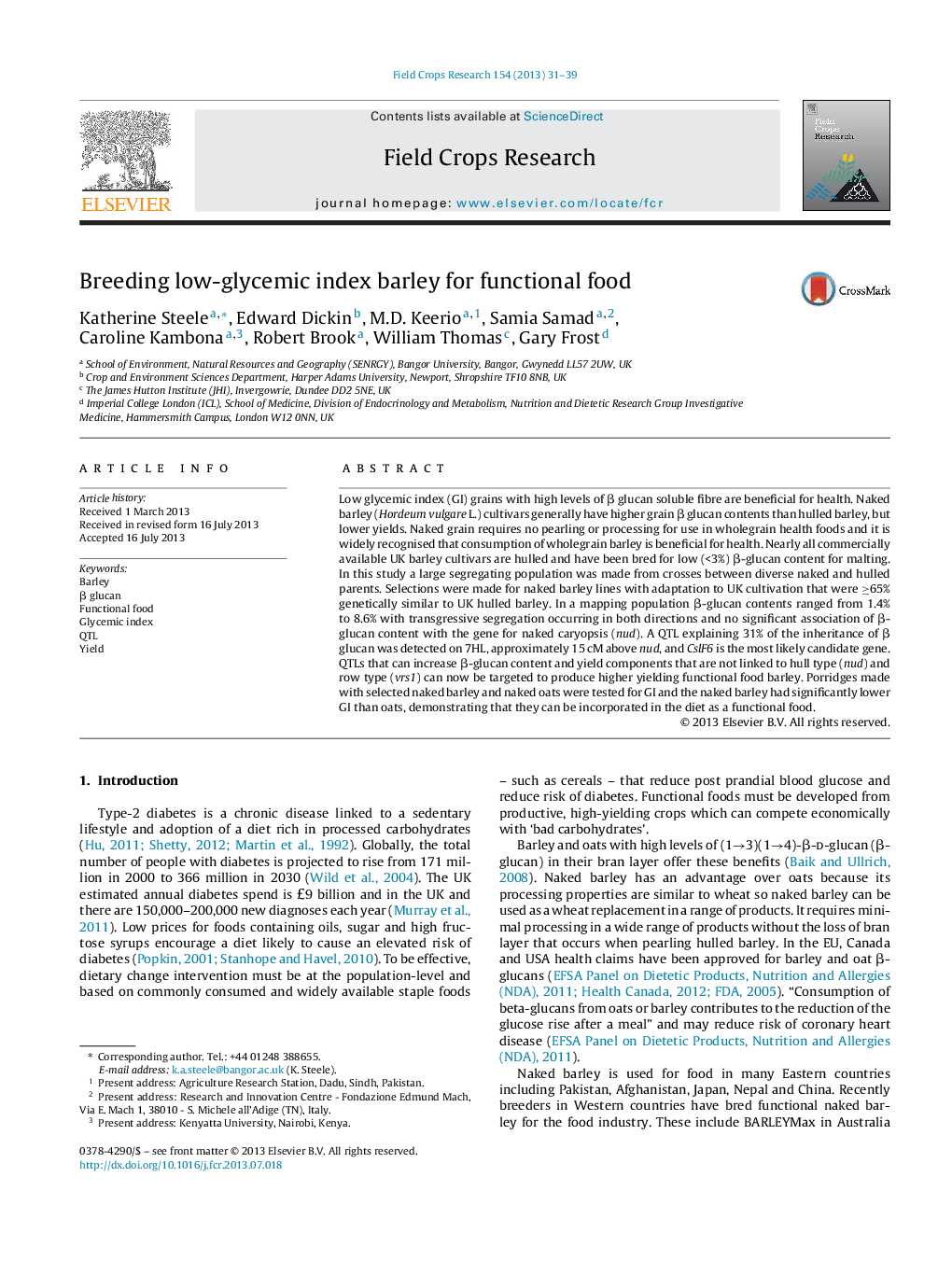| Article ID | Journal | Published Year | Pages | File Type |
|---|---|---|---|---|
| 6375149 | Field Crops Research | 2013 | 9 Pages |
â¢Naked (hull-less) barley lines with lower GI values than oats were selected for UK agronomy from large segregating bulks.â¢The naked lines are a valuable resource for breeding and product testing for commercial supply chain development for food barley.â¢A QTL for β glucan content associated with the CslF6 gene (but not associated with nud) can be targeted in marker assisted selection.
Low glycemic index (GI) grains with high levels of β glucan soluble fibre are beneficial for health. Naked barley (Hordeum vulgare L.) cultivars generally have higher grain β glucan contents than hulled barley, but lower yields. Naked grain requires no pearling or processing for use in wholegrain health foods and it is widely recognised that consumption of wholegrain barley is beneficial for health. Nearly all commercially available UK barley cultivars are hulled and have been bred for low (<3%) β-glucan content for malting. In this study a large segregating population was made from crosses between diverse naked and hulled parents. Selections were made for naked barley lines with adaptation to UK cultivation that were â¥65% genetically similar to UK hulled barley. In a mapping population β-glucan contents ranged from 1.4% to 8.6% with transgressive segregation occurring in both directions and no significant association of β-glucan content with the gene for naked caryopsis (nud). A QTL explaining 31% of the inheritance of β glucan was detected on 7HL, approximately 15 cM above nud, and CslF6 is the most likely candidate gene. QTLs that can increase β-glucan content and yield components that are not linked to hull type (nud) and row type (vrs1) can now be targeted to produce higher yielding functional food barley. Porridges made with selected naked barley and naked oats were tested for GI and the naked barley had significantly lower GI than oats, demonstrating that they can be incorporated in the diet as a functional food.
